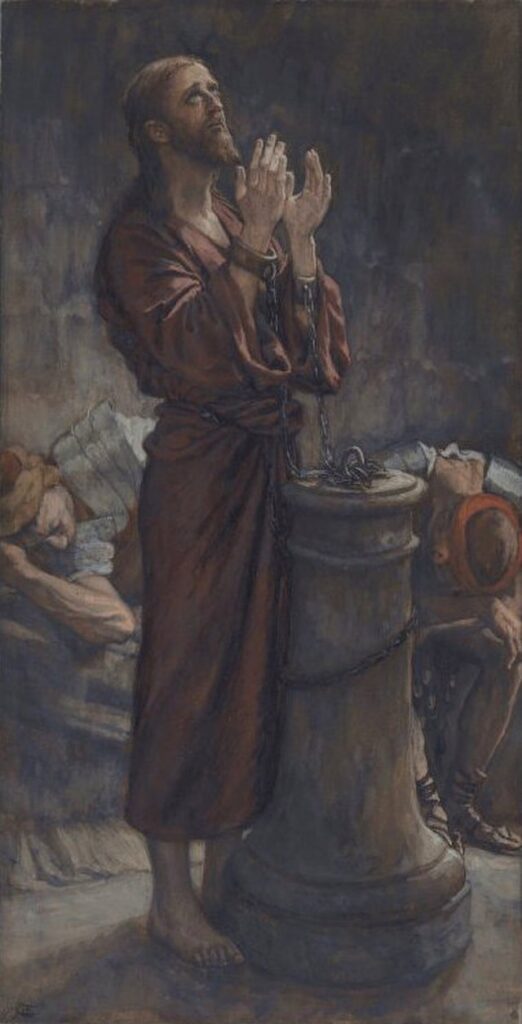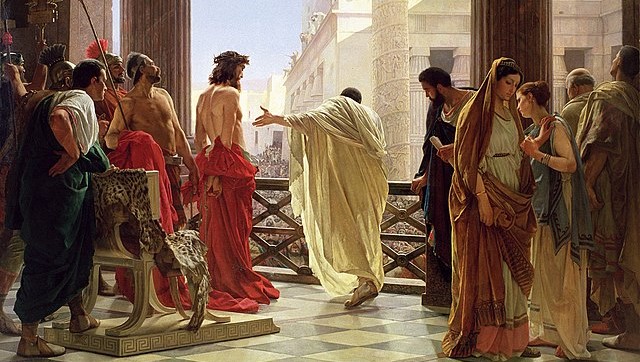Today, Christendom observes Good Friday, when our Lord Jesus Christ suffered and was put to death on the Cross under Pontius Pilate, the Roman prefect (governor) of Judea (26–36 AD).
As a Roman governor, Pilate had the power of a supreme judge, which meant that he had the sole authority to order a criminal’s execution. Among his duties were to make sure that taxes of the conquered territories were collected, to oversee construction projects, and above all, to maintain law and order. It must be noted that whenever the Romans conquered lands, they did not micromanage them, but rather allowed the body politic that was already in place to continue to carry out such tasks, as with the region of Judea—the Sanhedrin under King Herod ran the religious-political affairs.
To make a present-day comparison, in the United States of America, the 50 states have autonomy to govern themselves. The federal government cannot interfere on the local level, unless asked to do so by the former. Yet states must, nonetheless, yield to the Constitution, and the federal government can intervene by either declaring a national emergency via a presidential mandate, by a Supreme Court sentence, or by a legislative act of Congress. In like manner, the Romans operated their conquered lands and peoples, though there were three absolute demands that of the former that always had to be met: the payment of taxes, the presence of the military, and not to cause any problems for the Roman governor.
This is why the Jews brought Jesus to Pilate so that he may be put to death on the Cross. They had already condemned Him for the crime of blasphemy—he dared call God Himself the Son of God (cf. Mark 14, 53–65)—but could not legally apply capital punishment. Interestingly, the accusation of blasphemy in the Gospels, both during Christ’s public ministry and in his trial, does not refer to the specific and technical definition of blasphemy, which according to the Mishna, requires the blasphemer to have mentioned the Name: ‘I Am Who Am’, i.e. the Tetragrammaton—the Hebrew name of God transliterated in four letters as YHWH and articulated as Yahweh—which Jesus never did. Instead, it was His claim to be one with the God the Father, i.e., to be divine.
There seems to be a disparity in the character of Pilate according to the Gospels and that of the Jewish historian Flavius Josephus (37/38–100 AD). While both portray him as a complex man caught in a difficult role in difficult times, Josephus stipulates that he was cruel, disrespectful, and deceptive in his dealings with the Jews. His capriciousness included being horribly violent and overbearing towards the conquered peoples of Judea, but also being reticent and conciliatory towards them. This somewhat parallels what is written in his Letter to the Emperor Tiberius Caesar—its authenticity is disputed among historians.
‘It seems to me that,’ writes Pilate, ‘of conquered cities, Jerusalem is the most difficult to govern. So turbulent are the people that I live in momentary dread of an insurrection. I have not soldiers sufficient to suppress it. I had only one centurion and a hundred men at my command. I requested a reinforcement from the prefect of Syria, who informed me that he had scarcely troops sufficient to defend his own province. An insatiate thirst for conquest to extend our empire beyond the means of defending it, I fear, will be the cause of the final overthrow of our whole government. I lived secluded from the masses, for I do not know what those priests might influence the rabble to do; yet I endeavored to ascertain, as far as I could, the mind and standing of the people.’

The Gospels paint a different picture of the Roman governor, portraying him as a fair judge, to name an attribute. During Christ’s trial, for example, Pilate gives Jesus every opportunity to respond to the accusation and is perplexed that He remains silent (cf. Matthew 27, 14; Mark 15, 2–5; Luke 23, 3–4). John portrays Pilate as somewhat cynical with his ‘What is truth?’ question (John 18, 38). He also seems to have quite an insight into the cunning motives of Jesus’ accusers and their envy towards Him (Matthew 27, 18; Mark 15, 10); Pilate also tends to stand up to the crowd to at least some extent (Matthew 27, 23; Mark 15, 14; Luke 23, 4) since he found Jesus to be without guilt (John 19, 4). In the end, Pilate comes off as both weak and ambitious as he gives in to the Jewish mob to have Christ crucified when he is threatened:
‘From then on, Pilate tried to set Jesus free, but the Jewish leaders kept shouting: “If you let this man go, you are no friend of Caesar. Anyone who claims to be a king opposes Caesar.”’ (John 19, 12)
In his Ecclesiastical History (2, 7), Eusebius of Caesarea states that on the orders of the Emperor Caligula, Pilate committed suicide sometime after 36 AD, which indicates either fear or honor.
The Question to Be Asked: Who Was the Real Pontius Pilate?
At first glance, while it may appear that there are two different Pilates as portrayed by Josephus and the Gospels, they both tend to complement each other’s depictions. For example, the correlation in character, that of Pilate’s stubbornness reference in Josephus’ Wars of the Jews (Book II 9, 2) in allowing the Jews to remain five days motionless around his house before he decided to act is similar to his being pertinacious in refusing to convict Jesus, at least as written in the Gospel of John.
There is no doubt that the historical Pilate was ruthless when he had to be. The Gospels, on the other hand, present a slightly more subtle man who does not wish to appear unjust or weak, but who, nevertheless, knowing he had a situation beyond his control, gives in to the pressures of the Jewish leaders and the crowd when they say: ‘Crucify Him, Crucify Him’ (Matthew 27, 22–23; Mark 15, 13–14; Luke 23, 21), demanding that the murderer Barabbas be freed instead (John 18, 40).
Pontius Pilate; a complex man, without a doubt. One who was both effective and resolute enough to make his mark as Roman governor, but who in the end ‘washed his hands’ of a situation, which will forever cast him as one of the most tainted human figures in the annals of history (Matthew 27, 24).
Related articles:







